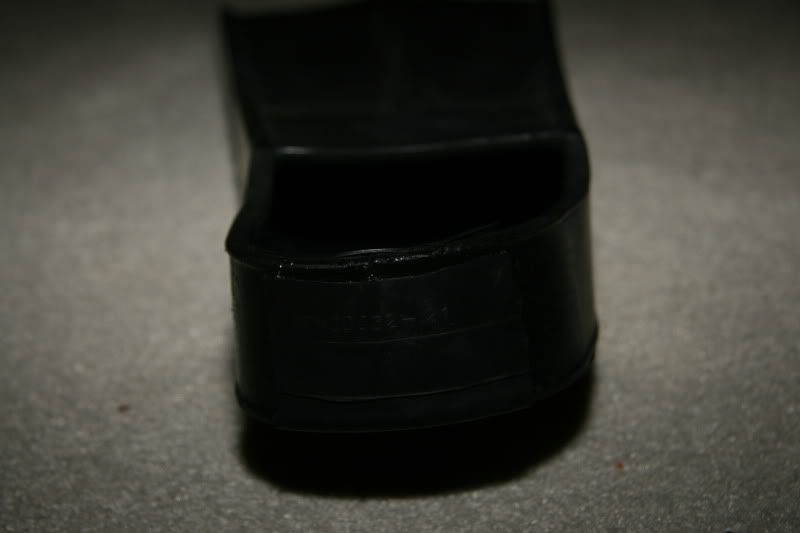i heard from Finis. They can't do repairs and since the fin is beyond warranty they can't replace it fin for fin. They did, however, offer me a replacement at what I consider to be very fair terms, all things considered, and it has been a good fin for me. I have ordered from Waterway (Canada) once before and found their service to be very good. I am looking at bifins from them as well as a monofin. After all, one can never have enough fins.
Before you throw away that broken fin, try this:
1. Cement the fin heel strap with neoprene cement. Do so by first removing any oils from the rubber with a solvent, then laying down one coat of glue. Let it dry completely.
2. Then put a second layer of cement on the broken heel strap. Let it dry until it is "tacky" to the touch, then using hand pressure put it together and hold it there for a few minutes.
3. Take on old bicycle inner tube (one of the larger diameter ones), and cut it in two and cut a strip out that is about two to three inches long. Now cut that strip lengthwise on one side. Coat the inside of that inner tube with neoprene cement, and coat the whole broken heel strap with neoprene cement. Let it dry an hour. (If the new layer of neoprene cement "undoes" the original repair, simply stick it together.) Now coat the inner tube and the heel strap a second time with the neoprene cement, let dry until tacky.
4. Wrap the inner tube tightly around the heel strap, by laying the inner tube strip over it on both sides to provide support to the original repair. You will end up with the inner tube covering the outside, going over the top, and covering the inside of the strap.
5. Let it dry overnight.
6. Enjoy the fin again. I have done this with an old US Divers Aqualung fin that I broke the heel on. It works pretty well. Here are some photos of the mended heel strap:
In the 1980s most competitive monofins were hand-made in the Eastern Block countries, and were probably better than the mass-produced ones of today. An individual could take the sheets of fiberglass that were being produced in those countries, cut them to size (length and width, with whatever shape desired), and also peel off layers of the fiberglass to make a tapered blade of varying flexibility. That currently is hard to do with commercial varieties.
SeaRat
(ex-Finswimming Director, Underwater Society of America)






